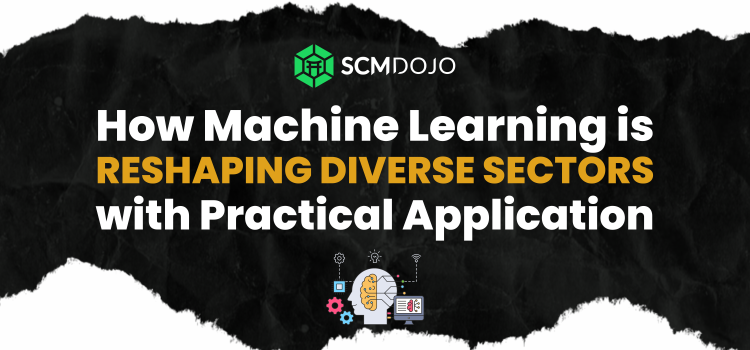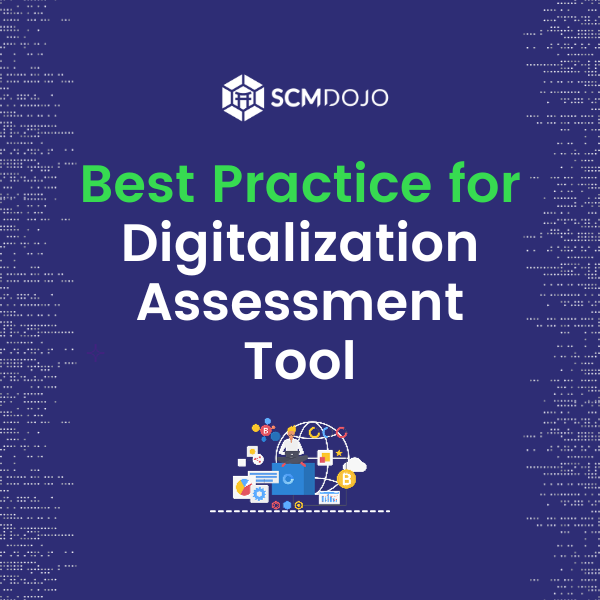When you think about machine learning, you might imagine robots learning as they interact with their surroundings. In numerous aspects, you’re not too far off. Within the specialized subject of artificial intelligence (AI), machine learning refers to the ability of systems and machines to learn from their experiences and get better without explicit programming. This blog explains in simple words How Machine Learning Works, its Benefits & its Applications in the fields of banking, medical etc.
What is Machine Learning in Simple Words
Fundamentally, machine learning gives computers the ability to recognize patterns in and understand complicated data. The creation of AI systems depends on this iterative learning process. These systems may find patterns and insights in data by using a variety of algorithms, producing valuable results, forecasts, and suggestions. Simply put, a machine can receive information, draw conclusions or projections from it, and act on that knowledge.
Although the idea of machine learning is not new, its use and development have accelerated recently. Machine learning is flourishing because of the tremendous increase in data volume and the advancement of technology. Greater data equates to more significant learning potential, and as technology advances, machine learning development services and capabilities also advance in breadth and complexity.
How Machine Learning Works
Numerous algorithms are used in machine learning, each with a specific purpose. Without human assistance, these algorithms enable systems to identify patterns and reach conclusions. They fall into four categories: reinforcement learning, unsupervised learning, semi-supervised learning, and supervision. Everybody has a place in various situations.
By using labeled data to train a model, supervised learning techniques enable the model to determine the correlation between input and output. Unsupervised learning uses unlabeled inputs to find hidden patterns in data. Reinforcement learning involves learning by trial and error, acting, and getting feedback, whereas semi-supervised learning combines labeled and unlabeled input.
Areas Benefiting from Machine Learning
Now that you have a firm grasp of machine learning’s definition and operation, it’s time to explore the fascinating aspect of this cutting-edge technology: its practical uses. Not merely a catchphrase, machine learning is a revolutionary force that is changing several industries.
The Medical Field
Machine learning is bringing about a revolution in the healthcare industry. The technology is an effective tool for patient care, diagnosis, and therapy because of its capacity to analyze enormous volumes of medical data and spot trends. Here are a few instances from real life:
- Disease Detection. Healthcare providers can diagnose illnesses earlier and more accurately thanks to machine learning algorithms. For example, Google DeepMind has created an algorithm that uses retinal scan analysis to identify eye disorders such as diabetic retinopathy.
- Drug Discovery. The process of creating new medications and discovering new drugs is expensive and time-consuming. By identifying possible medication candidates by analyzing large datasets, machine learning expedites this process. Atomwise, for instance, predicts the efficacy of chemical compounds against particular diseases using machine learning.
- Personalized Treatment Plans. To develop individualized treatment regimens, machine learning can examine a patient’s genetic composition and medical history. This customized method is beneficial in cancer treatment, as patient-to-patient variability exists in the effectiveness of many medications.
Banking and Finance
The advantages of machine learning are well-known to the banking and financial sectors. Algorithmic trading, fraud detection, and risk assessment are among its common uses. Applications in real life include:
- Fraud Detection. Algorithms that use machine learning continuously examine transactions to identify any unexpected trends that might point to fraud. PayPal, for instance, uses machine learning to track billions of transactions daily and spot fraud.
- Algorithmic Trading. To make quick trading decisions based on real-time market data, high-frequency trading uses machine learning. Businesses like Renaissance Technologies surpass conventional trading tactics by applying machine learning models.
- Customer support. In the banking industry, machine learning-powered chatbots and virtual assistants are becoming standard. These virtual agents can respond to client queries, complete transactions, and offer support around the clock.
Marketing and E-commerce
Machine learning has proven to be a goldmine for marketing efforts and e-commerce platforms. Everything from customized product recommendations to enhancing the consumer experience uses it. Here are a few instances from real life:
- Recommendation Systems. By analyzing your past purchases and browsing habits, Amazon and Netflix employ machine learning to provide you with personalized recommendations that keep you interested and coming back for more.
- Analysis of Customer Behavior. Churn risk and cart abandonment are two examples of customer behavior that machine learning can forecast. This makes it possible for companies to handle problems and keep clients proactively.
- Dynamic Pricing. Airlines and hotel chains employ machine learning to modify rates according to your browsing history, occupancy rates, and demand. This dynamic pricing approach optimizes profits.
Transportation and Automotive
Machine learning can potentially bring about a significant shift in the automobile sector. Applications include predictive maintenance, self-driving automobiles, and route optimization.
- Autonomous Vehicles. Organizations such as Waymo and Tesla are at the forefront of the development of autonomous vehicles. When navigating and making decisions while driving, machine learning models analyze data from cameras and sensors.
- Route Optimization. To cut down on wait times and travel expenses, ride-sharing services such as Uber and Lyft employ machine learning to optimize their routes. With this technology, drivers can choose the most practical ways to reach their passengers.
- Predictive Maintenance. Machine learning is used to track an automobile’s condition and determine when repairs are necessary. This keeps cars operating well and avoids expensive problems.
These represent only a handful of the domains in which machine learning is having a significant influence. Machine learning will indeed permeate many more industries as technology develops, providing creative solutions and revolutionizing how we work and live. Machine learning has a very bright future ahead of it, with countless possibilities.
Conclusion
In conclusion, understanding how machine learning works is key to unlocking its transformative potential. This blog has demystified the concept, explaining in simple terms how machines can learn, recognize patterns, and make informed decisions without explicit programming. By delving into the categories of machine learning algorithms—supervised, unsupervised, reinforcement, and semi-supervised—the intricacies of this technology become clearer.
The real-world applications of machine learning are vast, revolutionizing industries like healthcare, finance, marketing, and transportation. In the medical field, it aids in disease detection, drug discovery, and personalized treatment plans. Banking benefits from fraud detection, algorithmic trading, and enhanced customer support. Marketing and e-commerce thrive on personalized recommendations, customer behavior analysis, and dynamic pricing. Transportation embraces machine learning for autonomous vehicles, route optimization, and predictive maintenance.
As technology advances, the impact of machine learning will only grow, permeating more industries and providing innovative solutions. The future looks bright for machine learning, promising a myriad of possibilities that will reshape the way we live and work.




